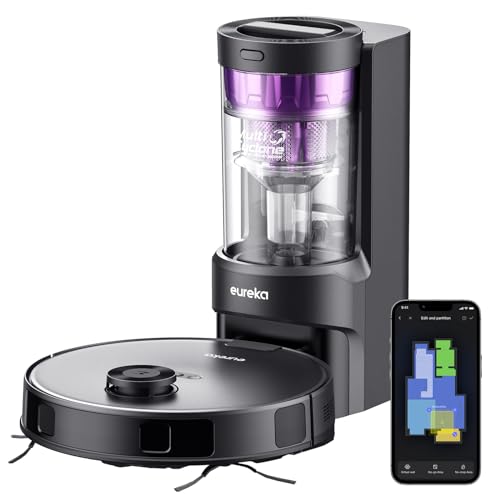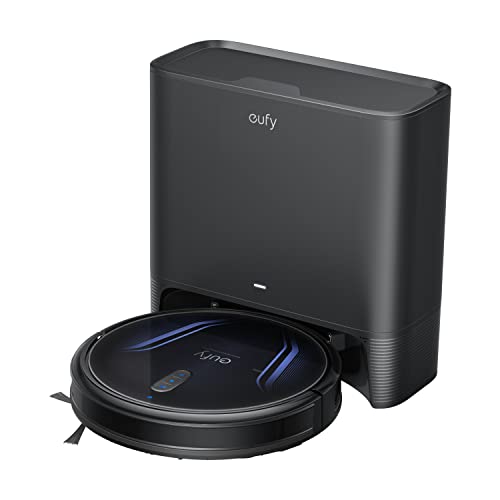관련뉴스
전문가들이 제공하는 다양한 정보
Five Killer Quora Answers To Bagless Robot Vacuums
작성자 작성자 Cary · 작성일 작성일24-09-02 16:52 · 조회수 조회수 20
페이지 정보
본문
 bagless robot vacuum Robot Vacuums
bagless robot vacuum Robot VacuumsRobot vacuums can be costly and aren't a substitute for a full-sized regular vacuum. It's not difficult for them to become entangled in power cords or cause a choke on pet hair. So it's best to get rid of the clutter on your floor prior to each cleaning session.
Also, most robots are quite noisy when they self-empty. This process can take up to a minute and be startling to children and pets.
Cost
A robot vacuum may be expensive to buy however, it can help you save time and money. It can be used with a variety of flooring options such as hardwood floors and low-pile carpets. It isn't able to handle large debris or heavily stained areas which is why it's Best bagless self emptying robot vacuum to have a regular vacuum on hand. It can however clean the corners and nooks and crannies that your regular vacuum isn't able to reach.
The best model to choose will depend on the amount of space you have as well as how often you utilize your robot. A bigger house will require a stronger robot with an even bigger dust bin. Smaller homes could benefit from smaller models and smaller dust bin. Some models are self-emptying which can cut down on cleaning chores significantly.
Certain models with higher end features have cliff sensors as well as optical encoders to prevent them from falling down staircases or hitting other obstacles however, these features increase the overall cost of the robot. Smart mapping can help your robot learn your home's layout and tidy specific areas or rooms with the click of an button. No-go zones allow you to place magnetic boundaries around areas you don't wish the robot to get into like your children's bedrooms.
The battery life of a robot is an additional factor to be considered. If you intend to use your robot often, choose one with a long-lasting battery. Some come with an automated base station that recharges them and picks up where they left off, meaning you don't have to clean the dust bin after each use.
Before you purchase a bagless hands-free vacuum robotic vacuum make sure you make sure you check the warranty. Many manufacturers only offer two or one-year warranties on their products, which means you could be left without any guarantee if something happens to your machine. The good thing is that Australian Consumer Law protects you from having to pay more than the manufacturer's suggested retail price for a product that doesn't perform as you would expect.
Capacity
The capacity of a robot vacuum is an important factor in determining how long it will last before needing to be cleaned. It is crucial to consider your needs for cleaning and select the model that has a large dustbin to keep from frequent interruptions. This is particularly crucial if you have children or pets. It's also an excellent idea to look on the website of the manufacturer to find cleaning and maintenance tips specific to the model you have. This includes removing hair tangled around the brushes and emptying (and cleaning, if the manual recommends it) the dustbin after every use. It is also recommended to clean the cameras and sensors to make sure they are working properly.
In terms of capacity, robots vary significantly. Some models have a tiny dust bin that can hold up to two cups of dust. This is enough to keep your home clean between cleaning sessions, but not nearly as big as a large stick or upright vacuum. In general robots are less suction than a traditional vacuum cleaner, however they are still more than capable of picking up most small particles and other small particles.
Another thing to consider is how a robot can deal with obstacles like furniture or pet fur. While many models come with sensors to identify and avoid obstacles, they aren't foolproof. If you have an animal that is large, for example the basic robot vacuum will likely get bogged down in fur and not be able to clean your floors thoroughly. In these situations you'll need to purchase an expensive model that is better at navigating the mess.
Some robots can also be enhanced by advanced features like mopping capabilities and AI image recognition, which allows for elite-level obstacles avoidance. These upgrades can be costly however they are well worth it for people who spend a lot of time at home.
In the end, no robot can replace a real vacuum cleaner. Many people prefer to have one in their arsenal for large piles of debris, or larger pieces of debris. The majority of robotic vacuums aren't strong enough to tackle dirt that is buried in stairs, and their scores for picking up on carpets with low pile and hard floors aren't up to scratch. You'll need to use a broom or sweeper to tackle more extensive cleaning tasks.
Noise
Many consumers enjoy the convenience of robot vacuum cleaners but others find their noise level to be a bit too loud. There are a variety of factors that influence the sound levels of bagless robot vacuum mop vacuums, which include their size and power and also their motor type and design. Certain models, for instance, feature brushless motors that operate more quietly than brushed counterparts. Additionally, manufacturers typically utilize soundproofing materials as well as streamlined airflow designs to reduce the audible impact of the machine when it is in use.
Fortunately, the noise level of robot vacuums is increasing over time. The latest models feature advanced navigation and obstacle detection systems to guarantee seamless motion throughout your home, reducing the sound of jarring and bumps. This technology also lets the device map out your home so it can determine the best way to maneuver around furniture and other obstacles.
The top robotic vacuums also have integrated mops to can clean your floors. These new machines, in contrast to traditional vacuums that rely on static suctions, can pulverize water, detergent and other substances. They also have the ability to alter the pressure of their mop based on floor material type, applying less or more water pressure to tile and hardwood floors respectively. The DEEBOT X2 OMNI uses 8,000Pa power to clean your floors.
Although the noise level is decreasing for robot vacuum bagless vacuums, they are still not as silent compared to manual vacuums that are full-sized. This is particularly relevant when robot vacuums are used on rugs that have soft fibers. They can get clogged and unable move. It is essential to have a traditional vacuum on hand for heavy cleaning.
In the end, the accumulation of debris within the robot vacuum could lead to loud or abnormal noises. Long hair or other small objects can become caught within the wheels or brushes and cause the device to run more and make noise. Cleaning or replacing these parts can help the appliance run more efficiently. Also regular maintenance and troubleshooting can ensure that your smart vacuum runs smoothly and quietly.
Maintenance
Robot vacuums can be a useful hands-free method of cleaning your home. But they're not a full substitute for a full-size, manually operated vacuum. Like all pieces of equipment, they require regular maintenance to keep them running at their best.
Most robot vacuums are equipped with a docking station that lets them recharge and begin a new cleaning session when they are required. They typically include bags or a dustbin made of plastic that is easy to clean and empty, as well as clean. After each use, examine the bin and brush rolls for hairs, lint, or other debris. It is also recommended to regularly clean the main brush with warm water and mild soap. It should dry completely before putting it back into the robot.
Many robot vacuums come with sensors that allow them to navigate around obstacles and avoid furniture or walls. Some models are more advanced, and can map your home with cameras or lasers to design the most efficient route through the rooms. However, even the most advanced bagless wifi-connected robot vacuums aren't foolproof They can still get into things that they shouldn't and become entangled in thick shag carpet fibers.
The main issue with maintenance for most robots is that the lithium ion batteries require replacement after a certain period of time. According to CHOICE's 2020 consumer survey, battery problems were the most common reliability problems identified by owners of robotic vacuums. Most models will have to be replaced within four years after purchase.
If you utilize robots for cleaning, a regular maintenance schedule is enough to keep it in good condition. It is important to keep the wheels free of any pet hair or threads that might be encased around them, and clean the bottom of the robot down with a damp cloth after each use. This will allow the wheels to move easily and avoid unnecessary strain on the motor.
 Check the charging port at least once a week for blockages and clean the rollers and brushes every two months using mild soap and warm water. Brushes and rollers as well as other accessories for robots at department stores and hardware stores. Many are also available on the internet.
Check the charging port at least once a week for blockages and clean the rollers and brushes every two months using mild soap and warm water. Brushes and rollers as well as other accessories for robots at department stores and hardware stores. Many are also available on the internet.- 이전글Megadroid Rctpa Analysis - Predicting Long Term In Forex Trades 24.09.02
- 다음글The 10 Scariest Things About Type 3 Rollator Walker 24.09.02
댓글목록
등록된 댓글이 없습니다.


